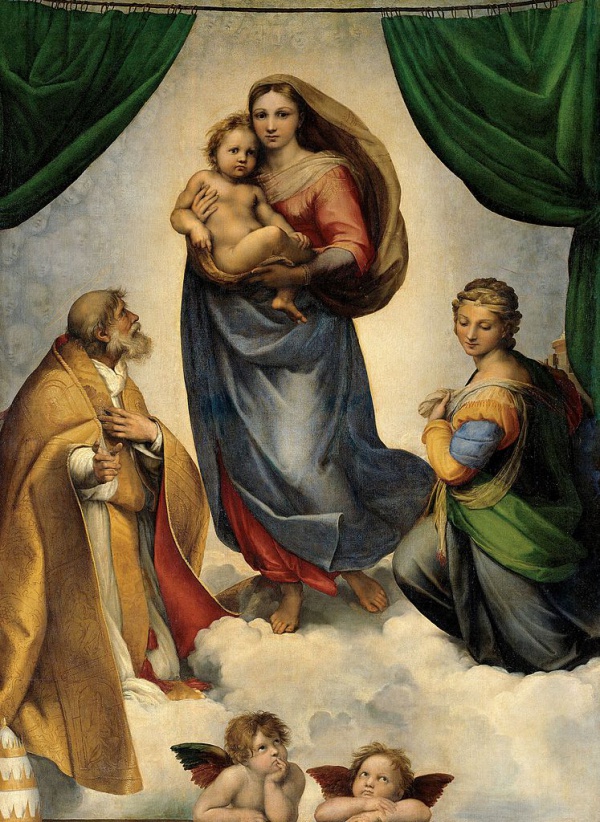Facts About Sistine Madonna
The Sistine Madonna, also known as the Madonna di San Sisto, is an exquisite oil painting by the Italian master Raphael. Commissioned in 1512 by Pope Julius II for the church of San Sisto in Piacenza, this artwork depicts the Madonna holding the Christ Child, flanked by Saint Sixtus and Saint Barbara. Measuring 265 cm by 196 cm, the painting is celebrated for its intricate composition and the vibrant hues characteristic of the Renaissance period.
The history of the Sistine Madonna is as captivating as the painting itself. In 1754, it was relocated to Dresden, where it became a significant piece in the German art scene. It left a profound impact on many artists and intellectuals of the era, including Goethe, Wagner, Nietzsche, and Dostoyevsky, and emerged as an emblem of 19th-century German Romanticism. During World War II, the painting narrowly avoided destruction during the bombing of Dresden. Subsequently, it was taken by the Red Army to Moscow but was returned to Germany in 1955 after Stalin's death, amidst some controversy regarding its preservation.
Today, the Sistine Madonna can be admired at the Gemäldegalerie Alte Meister in Dresden, where it stands as a highlight of the collection. The painting’s cherubim, depicted below Mary, have achieved fame in their own right, inspiring numerous legends and merchandise. The Sistine Madonna continues to enchant viewers with its artistic brilliance and rich historical significance.

 Poland
Poland